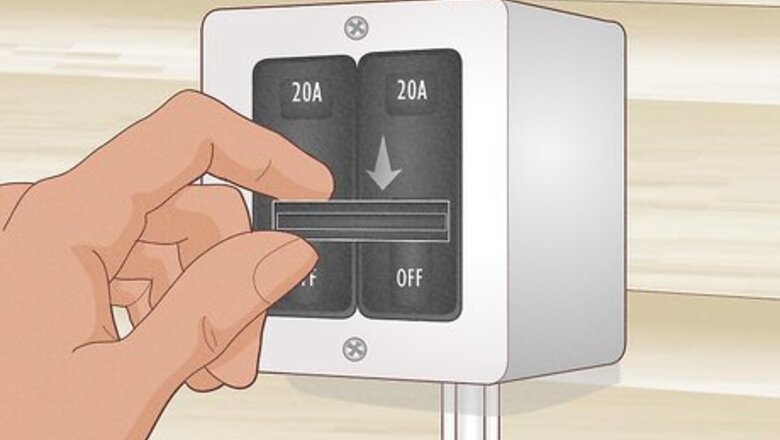
views
X
Trustworthy Source
U.S. Department of Energy
Official site for the U.S. Department of Energy, which provides resources related to energy safety, conservation, and efficiency
Go to source
To clean the unit, you’ll need to vacuum the compressor unit, and replace the inside air filter. The air conditioner unit should be cleaned annually in order to continue operating correctly.
Cleaning the Condenser
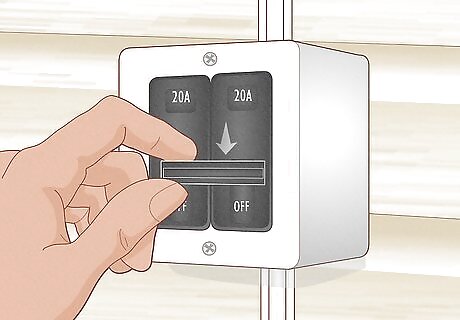
Shut off power to the unit. There should be an outdoor shutoff near the condenser unit. This will resemble a square box on the wall of the apartment or house. Inside, look for a switch that you can slide to the “OFF” position. If there is no switch, you’ll need to manually pull the plug which feeds power to the condenser. Before you begin disassembling any portion of the condenser, it’s crucial that you disable the power supply. If you cannot find the power outlet where the compressor unit is plugged in, or if you’re inclined to be extra cautious, you can simply flip the switch to “OFF” in the circuit breaker box which controls power to the AC condenser.
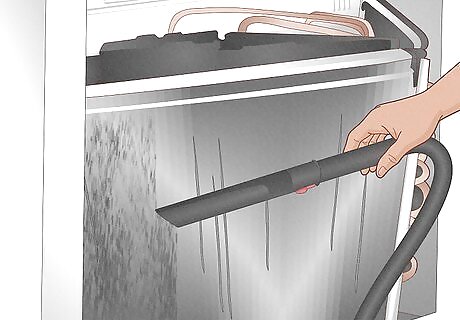
Vacuum the condenser fins. The fine, narrow slats of metal which line the sides of the compressor unit are called “fins.” You can clean the fins by running the nozzle of a vacuum cleaner over them; this will remove the debris and allow the condenser to pull in air without obstruction. A wet/dry vacuum is the tool best suited for this job. The condenser unit sucks in air through these fins. Over the course of time, these will become dirty with bits of leaves, grass, and dust. If you don’t have a wet/dry vacuum, see if any of your friends or neighbors have one. You may also be able to rent a wet/dry vacuum from your local hardware store.
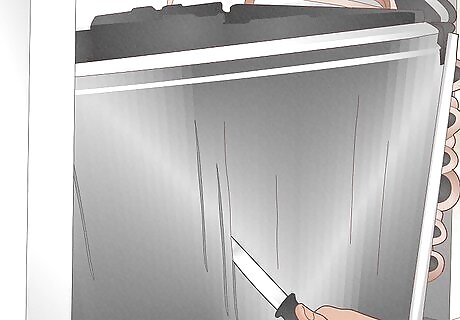
Straighten the condenser fins. Often with normal wear, some fins on the condenser can become bent. If you notice that any of the fins are crooked or have been twisted, you can use a knife or kitchen utensil to gently straighten the fins. Apply gentle, steady pressure to bend the fins back into position. If you use excessive force, you risk snapping off the fins or damaging them further.
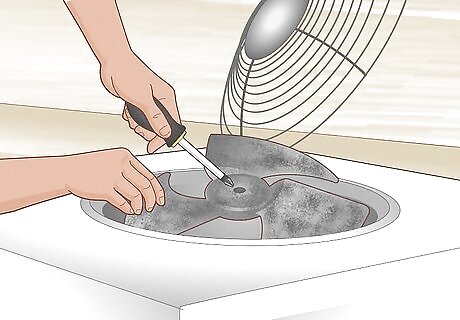
Unscrew and remove the fan. The fan unit sits on top of the compressor, and is typically covered by metal wiring or a grate. Using a screwdriver, remove the wiring on top of the fan, and then unscrew and remove the fan itself. Due to the wires connecting the fan motor to the compressor unit, you may not be able to fully lift off the fan. You’ll simply have to lift the fan as far out of its housing as possible.

Wash the fan blades and the interior fins. Using your garden hose, rinse any debris (bits of leaves, grass, dust, or pollen) from the blades of the fan. To make sure that the fan blades are clean, you can also wipe them off with a clean cloth or rag. Then, use the hose again to spray water through the compressor’s fins from the inside of the unit. Rinsing the fins from the inside will make sure that any obstructions are cleared, and the unit can effectively draw in air.
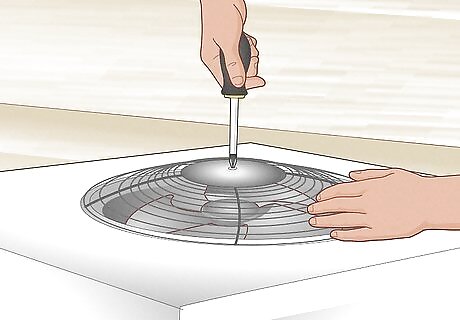
Reassemble the compressor unit. Once you’ve finished cleaning the fan blades and the interior of the compressor, you’re ready to put everything back together. Set the fan back in place, and re-insert the screws holding it to the metal frame. Do the same thing with the metal wiring over the top of the fan. At this point, you can also turn the power supply back on.
Cleaning the Inside Unit
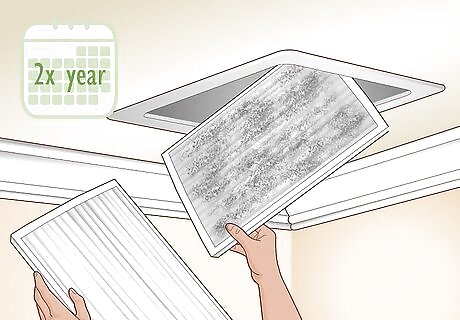
Change replaceable air filters twice a year. To change the filter, remove the metal grate which covers the filter. Then pull out the air filter, and set in a replacement unit. The air filter is located indoors, and will typically be close to the evaporator unit. It’s about two feet (0.6 meters) wide and 1 foot (0.3 meters) high. Over time, the air filter will become clogged and dirty with all of the dust and dirt particles that it has filtered out of the air. A dirty filter will obstruct airflow within the AC system, and will cause the system to function with much less efficiency.

Clean reusable air filters twice a year. If your AC unit’s air filter can be washed and reused, you can simply clean it and place it back in the unit rather than disposing it and purchasing a new one. To clean your reusable filter, follow the manufacturer’s instructions. Most reusable filters are cleaned by running them under lukewarm tap water, and a gentle application of dish soap. To quickly tell a disposable from a reusable air filter, inspect the material it’s made from. Disposable filters will be made of thick, papery material, while reusable filters are made of a rubbery frame and metal mesh.

Clean the drain. As the evaporator unit cools and de-humidifies air from outside, it produces runoff liquid. In most air conditioner units, this air runs down from the top of the evaporator in a thin, plastic pipe, and runs through a drain in the floor. To make sure that the drain hasn’t gotten clogged, you can run a stiff wire through the drain. If the plastic pipe is flexible, poke the wire into the bottom of the pipe as well, to make sure that it’s not clogged. In some more modern units, the pipe which drains water runs directly into the floor, and does not have a drain. In this case, you do not need to clean the setup. Call a AC professional cleaner—or your landlord—if you notice water pooling around the base of the evaporator unit, or see water-damaged flooring nearby.
Maintaining the Air Conditioner System
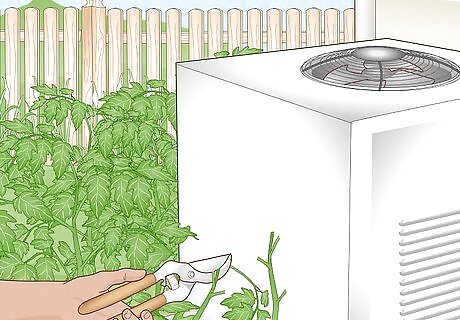
Trim plants and foliage around the condenser. Although condenser units are often viewed as an eyesore, they need to be surrounded by open space in order to function properly. If you have weeds, vines, or bushes encroaching on your condenser unit, use a pair of garden shears and trim the plants back. Make sure that you have a space of about two feet on all sides of the condenser unit. This space will maximize the unit’s efficiency by allowing plenty of free-flowing air.
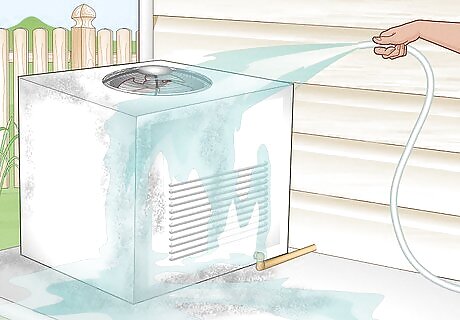
Wash pollen and dust off of the condenser. Rinse the condenser by spraying it with water from a garden hose. Work the spray from the hose over all sides of the condenser unit. Rinse from top to bottom, so that runoff from the top portion of the condenser does not stain the bottom portion. Over the course of time, the outdoor condenser unit can become covered in a layer of dirt and pollen kicked up by the wind. This coating of dust can reduce the efficiency of the condenser unit by blocking the unit from pulling in air.
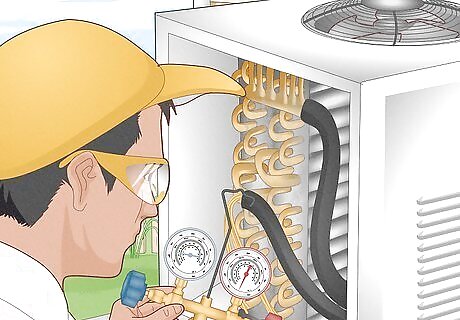
Have the unit professionally inspected and cleaned annually. While maintaining the function of the air conditioner unit should keep it functioning efficiently, it’s still smart to have it inspected by a professional. Plan to schedule your inspection in spring, before you start using the AC unit heavily in the summer. AC professionals will be able to inspect all parts of the air conditioning unit—including the evaporator coils and the air compressor—and can prevent or repair any problems early on. If you live in an apartment or a rental house, the landlord or property owner will likely have annual inspections performed. If you notice that your AC unit is not working properly or seems to be broken, contact your rental agency.















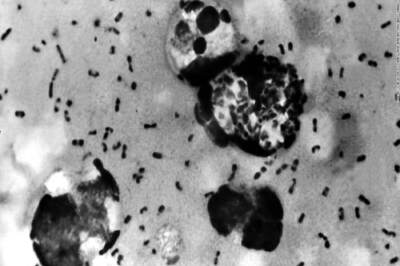



Comments
0 comment